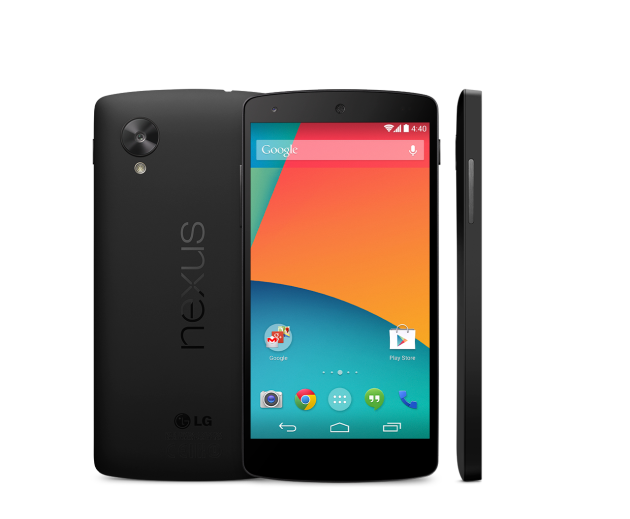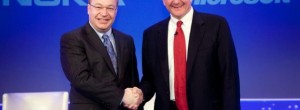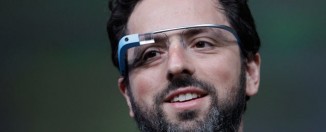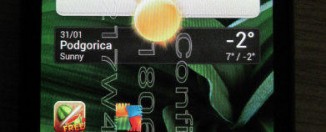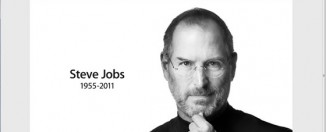Nokia prepares to self-destruct with Windows Phone 7 gamble
Wow! We knew this week was going to be a major week for Nokia, as its CEO Stephen Elop is due to announce the company’s new strategy on Friday, but nobody expected him to drop a bomb on the entire workforce just days before!
For a bomb is exactly what the now-infamous “burning platform” memo that Elop has circulated to all Nokia staff, really is. It is a memo filled with the most acerbic, stark and pull-no-punches claims that really make clear exactly the problems that nokia faces, and the huge forces lined up against it in the form of the iPhone, Android and cheap mobile phones from China.
But what exactly did he say in the memo? Is he right with his viewpoint, and if so, can Nokia even survive? Let’s look at the facts.

The key points of the “burning platform” memo
The memo in question is published in full at the bottom of this post (which makes this a very very long post! You might want to grab a cup of coffee!). The key points, though, are as follows:
- “While competitors poured flames on our market share, what happened at Nokia? We fell behind, we missed big trends, and we lost time.“
- “The first iPhone shipped in 2007, and we still don’t have a product that is close to their experience. Android came on the scene just over 2 years ago, and this week they took our leadership position in smartphone volumes. Unbelievable.”
- “At the lower-end price range, Chinese OEMs are cranking out a device much faster than, as one Nokia employee said only partially in jest, “the time that it takes us to polish a PowerPoint presentation.” They are fast, they are cheap, and they are challenging us.”
- “We have some brilliant sources of innovation inside Nokia, but we are not bringing it to market fast enough. We thought MeeGo would be a platform for winning high-end smartphones. However, at this rate, by the end of 2011, we might have only one MeeGo product in the market.“
- “Symbian is proving to be an increasingly difficult environment in which to develop to meet the continuously expanding consumer requirements…”
- “Our competitors aren’t taking our market share with devices; they are taking our market share with an entire ecosystem.”
These are all quotes from Elop, but they can be broken down into five core issues:
- After nearly four years, Nokia still has not come up with a phone to beat the iPhone
- Symbian and MeeGo are both dead in the water and simply cannot compete with the iPhone or Android
- Nokia has become too slow and has lost the innovative edge it used to have
- It can no longer compete either at the high-end or the low-end of the market
- It has no technology of its own that it can fall back on to start to compete once more.
Ouch!
Elop’s memo, then, put in bald terms what every blogger and industry analyst has been saying since the poorly received N97 revealed just how behind the curve Nokia is: the company is not competing and does not have the tools to do so. Symbian is dead. MeeGo, as we all suspected, is a non-starter and will not be the saviour that Nokia-lovers hoped it would be.
Nokia does not have the technology to save itself.
So what’s it to do?
Nokia’s hope for the future
Nokia’s only hope for the future, as Elop has hinted, is to join forces with a different eco system, a technical platform built by somebody else. That somebody is either Google, with its company-saving Android OS, or Microsoft, with its new, well received Windows Phone 7 OS.
There is no other choice. HP bought Palm, the only other mobile OS worth talking about (I don’t include Blackberry, as it’s primarily a business OS, not a consumer-friendly one), and has now just announced new HP/Palm devices, but it’s not prepared to share the technology with anyone else, unlike Google and Microsoft who are both happy to licence out Android and Windows Phone 7 to pretty much anyone.
Of the two, though, which should Nokia go for? It should go for Android. It won’t, but it should.
Android is the only OS with a proven track record of saving companies, and is now the number one mobile OS for smartphones, having increased in sales by 800% through 2010 (and that’s not a type – there really are 8 times as many Android devices being used now as there were at the start of 2010).
By contrast, Windows Phone 7 is new, untested, mobile OS that can’t be customized by manuacturers, as Microsoft won’t allow it to be.
Despite this, Nokia, I fear, will go the Windows Phone 7 route. Earlier today, Vic Gundotra, a Google VP, tweeted that “Two turkeys do not make an Eagle,” a reference to a quote from former Nokia CEO Anssi Vanjoki, who said exactly the same thing in 2005 about the BenQ-Siemens merger. This would rather imply that Nokia has chosen Microsoft’s Windows Phone 7 rather than Android, even though Nokia has been talking to both Google and Microsoft.
This will be a calamity! Far from jumping from a burning platform into a sea of uncertainty to save itself, Nokia would be jumping from a burning platform to a drowning one, hanging on for grim death to a platform that has still to get off the ground (or out of the water, if we’re sticking to the watery analogies!)
If Nokia really does go down the WinPho7 route, it’s really difficult to see the company pulling itself out of the mess it’s gotten itself into.
Can Nokia recover?
Reading the mobile crystal ball, here’s what I think will happen in the near future:
- Nokia will announce it’s working with Microsoft to produce a Nokia Windows Phone 7 device
- Nokia releases its first WinPho7, but it’s still not as advanced as those from Samsung and HTC, each of which has already had over a year working with WinPho7, and can develop new WinPho7 phones faster than Nokia can develop its own range of phones
- Nokia eventually catches up with the likes of HTC, but only because HTC, Samsung, and LG have all nailed their colours to the Android mast, and are focused on making flagship Android phones with WinPho7 devices forming part of their mid-level range
- As the world moves to an Android/iPhone mobile duopoloy, Nokia and Microsoft do the only thing left to them in a desperate bid to retain some relevance in this brave new world – they merge
- Vic Gundotra again tweets about two turkeys not making an eagle. Indeed, the eagle doesn’t land as it never quite takes off.
That’s a bit gloomy, I agree. But one of the biggest problems with WinPho7 is that it turns all WinPho7 phones into commodities, as device manufacturers cannot change the software, and so they can only differentiate themselves from their competitors through either hardware or price.
Given that Nokia still hasn’t released a phone with a single-core 1GHz processor, let alone a dual-core chip, it’s not exactly creating world-class technology at the moment! It’s hard to see Nokia creating a WinPho7 device that’s better than an HTC or a Samsung WinPho7 device.
My guess is the company will become just another smartphone manufacturer, similar to the way that Motorola lost its dominance. Nokia phones will still be there, on sale in your local Carphone Warehouse, but they won’t be the technological tours de force they used to be.
Remember when the Nokia N95 came out? The most technologically advanced phone of its time, it caused a sea-change in the mobile world, finally bring location-based services to the mobile phone, as well as every other feature you cared to name.
That was Nokia’s high water mark. That was the time when Nokia ruled the world. That time has now come to an end, and it’s hard to see it ever returning.
The Nokia “Burning Platform” Memo in full
Hello there,
There is a pertinent story about a man who was working on an oil platform in the North Sea. He woke up one night from a loud explosion, which suddenly set his entire oil platform on fire. In mere moments, he was surrounded by flames. Through the smoke and heat, he barely made his way out of the chaos to the platform’s edge. When he looked down over the edge, all he could see were the dark, cold, foreboding Atlantic waters.
As the fire approached him, the man had mere seconds to react. He could stand on the platform, and inevitably be consumed by the burning flames. Or, he could plunge 30 meters in to the freezing waters. The man was standing upon a “burning platform,” and he needed to make a choice.
He decided to jump. It was unexpected. In ordinary circumstances, the man would never consider plunging into icy waters. But these were not ordinary times – his platform was on fire. The man survived the fall and the waters. After he was rescued, he noted that a “burning platform” caused a radical change in his behaviour.
We too, are standing on a “burning platform,” and we must decide how we are going to change our behaviour.
Over the past few months, I’ve shared with you what I’ve heard from our shareholders, operators, developers, suppliers and from you. Today, I’m going to share what I’ve learned and what I have come to believe.
I have learned that we are standing on a burning platform.
And, we have more than one explosion – we have multiple points of scorching heat that are fuelling a blazing fire around us.
For example, there is intense heat coming from our competitors, more rapidly than we ever expected. Apple disrupted the market by redefining the smartphone and attracting developers to a closed, but very powerful ecosystem.
In 2008, Apple’s market share in the $300+ price range was 25 percent; by 2010 it escalated to 61 percent. They are enjoying a tremendous growth trajectory with a 78 percent earnings growth year over year in Q4 2010. Apple demonstrated that if designed well, consumers would buy a high-priced phone with a great experience and developers would build applications. They changed the game, and today, Apple owns the high-end range.
And then, there is Android. In about two years, Android created a platform that attracts application developers, service providers and hardware manufacturers. Android came in at the high-end, they are now winning the mid-range, and quickly they are going downstream to phones under €100. Google has become a gravitational force, drawing much of the industry’s innovation to its core.
Let’s not forget about the low-end price range. In 2008, MediaTek supplied complete reference designs for phone chipsets, which enabled manufacturers in the Shenzhen region of China to produce phones at an unbelievable pace. By some accounts, this ecosystem now produces more than one third of the phones sold globally – taking share from us in emerging markets.
While competitors poured flames on our market share, what happened at Nokia? We fell behind, we missed big trends, and we lost time. At that time, we thought we were making the right decisions; but, with the benefit of hindsight, we now find ourselves years behind.
The first iPhone shipped in 2007, and we still don’t have a product that is close to their experience. Android came on the scene just over 2 years ago, and this week they took our leadership position in smartphone volumes. Unbelievable.
We have some brilliant sources of innovation inside Nokia, but we are not bringing it to market fast enough. We thought MeeGo would be a platform for winning high-end smartphones. However, at this rate, by the end of 2011, we might have only one MeeGo product in the market.
At the midrange, we have Symbian. It has proven to be non-competitive in leading markets like North America. Additionally, Symbian is proving to be an increasingly difficult environment in which to develop to meet the continuously expanding consumer requirements, leading to slowness in product development and also creating a disadvantage when we seek to take advantage of new hardware platforms. As a result, if we continue like before, we will get further and further behind, while our competitors advance further and further ahead.
At the lower-end price range, Chinese OEMs are cranking out a device much faster than, as one Nokia employee said only partially in jest, “the time that it takes us to polish a PowerPoint presentation.” They are fast, they are cheap, and they are challenging us.
And the truly perplexing aspect is that we’re not even fighting with the right weapons. We are still too often trying to approach each price range on a device-to-device basis.
The battle of devices has now become a war of ecosystems, where ecosystems include not only the hardware and software of the device, but developers, applications, ecommerce, advertising, search, social applications, location-based services, unified communications and many other things. Our competitors aren’t taking our market share with devices; they are taking our market share with an entire ecosystem. This means we’re going to have to decide how we either build, catalyse or join an ecosystem.
This is one of the decisions we need to make. In the meantime, we’ve lost market share, we’ve lost mind share and we’ve lost time.
On Tuesday, Standard & Poor’s informed that they will put our A long term and A-1 short term ratings on negative credit watch. This is a similar rating action to the one that Moody’s took last week. Basically it means that during the next few weeks they will make an analysis of Nokia, and decide on a possible credit rating downgrade. Why are these credit agencies contemplating these changes? Because they are concerned about our competitiveness.
Consumer preference for Nokia declined worldwide. In the UK, our brand preference has slipped to 20 percent, which is 8 percent lower than last year. That means only 1 out of 5 people in the UK prefer Nokia to other brands. It’s also down in the other markets, which are traditionally our strongholds: Russia, Germany, Indonesia, UAE, and on and on and on.
How did we get to this point? Why did we fall behind when the world around us evolved?
This is what I have been trying to understand. I believe at least some of it has been due to our attitude inside Nokia. We poured gasoline on our own burning platform. I believe we have lacked accountability and leadership to align and direct the company through these disruptive times. We had a series of misses. We haven’t been delivering innovation fast enough. We’re not collaborating internally.
Nokia, our platform is burning.
We are working on a path forward — a path to rebuild our market leadership. When we share the new strategy on February 11, it will be a huge effort to transform our company. But, I believe that together, we can face the challenges ahead of us. Together, we can choose to define our future.
The burning platform, upon which the man found himself, caused the man to shift his behaviour, and take a bold and brave step into an uncertain future. He was able to tell his story. Now, we have a great opportunity to do the same.
Stephen.
[Source: Engadget Mobile]

